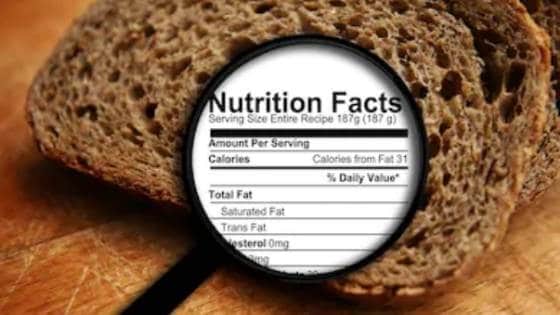Imagine a world where you could eat all the donuts and pizza you wanted… A world where cardio was only used as punishment to those who didn’t finish their tacos…
Okay, you can stop dreaming now.
Losing body fat is a game of balancing cardio and calories.
Too much cardio can interfere with the ability to retain muscle mass, while too little calories can negatively affect your health.
People often like the idea of adding more cardio just so they can eat more, and while it sounds very enticing, it isn’t an exact science.
Typically, creating a deficit through food is easier and more accurate than creating a deficit through cardio.
Table of Contents
Pros of Reducing Calories
- Time Efficient
It takes no extra time out of your day to create a deficit by lowering food intake. All you have to do is eat less, if anything, it saves time as you don’t have to cook and clean that much.
- More Accurate
Since reducing calories through cardio isn’t exactly additional calories burned, but calories replacing other calories burned, creating a deficit through food is a little more accurate.
I will expand on this later in the article.
Cons of Reducing Calories
- Nutrient Deficiencies
Depending on how low your calories currently are, you may run into nutrient deficiencies that can have a severe impact on body composition and your physical and mental health.
- Increased Hunger
Increased hunger is an obvious one.
The fewer calories you eat, the least satisfied you’re going to feel, which can increase cravings and make you more food-focused.
Start your journey to losing 24-60 pounds in just 12 weeks.
Get the free 12-Week Fat Loss Challenge Training Guide!

Pros of Increasing Cardio
- More Food
Ideally, you would have more food to fuel training sessions and make sure you’re getting enough nutrients in your body.
Cons of Increasing Cardio
- More Time Out of Your Day
Adding another cardio session will take more time out of your day, which can be tough for those who have busy schedules.
- Not Too Accurate
Expanding on what I mentioned earlier.
A typical person, depending on size and intensity, can burn between 3 – 7 calories per minute during cardio.
The heavier you are and the more intense the session, the higher in the range you would be.
On the other hand, the leaner and more adapted you get to cardio, the fewer calories you burn per minute.
This, however, is not 3 – 7 extra calories burned per minute, these calories are replacing some calories that you would have been burning even if you weren’t doing cardio.
If you were not doing cardio, you would be burning between 2 – 3 calories doing other things.
For example,
Let’s say I burn 7 cal/min doing cardio, 3 cal/min without cardio, and want to burn an extra ~100 cal today.
- Cal/min burned with cardio = 7
- Cal/min burned without cardio = 3
- Goal = ~100 extra calories.
What I burned during the cardio session
14 min x 7 cal/min = 98 cal
It would take me 14 min of cardio to burn 98 cal.
What I would have burned if I didn’t do cardio
14 min x 3 cal/min = 42 cal
However, I would have burned 42 cal doing other things anyway.
What I actually burned that day
Even though I burned almost 100 calories during the cardio session, since I would have burned 42 calories anyway, I actually only burned 56 extra calories that day (98 – 42 = 56).
If I wanted to actually burn an extra 100 calories, I would have to do 25 minutes of cardio.
Calories burned with cardio
25 min x 7 cal/min = 175 cal
Calories burned without cardio
25 min x 3 cal/min = 75 cal
so 175 – 75 = 100 cal would put me at an extra 100 calories burned per day.
Tracking Your Cardio
Even though there isn’t an exact way of knowing how many calories you burned through cardio, a good way to quantify it is to stay constant to whichever method you decide to track your calories with.
Whether you like using the heart rate monitors already installed in the cardio machines, Polar watches, or FitBits, it’s okay. Just try to stay consistent.
Constantly switching from one measuring device to another can make it difficult to create a baseline to go off of when deciding whether to add or reduce cardio.
I personally like using the Polar Watch as it helps me stay consistent regardless of which machine I decide to use.
When is it Important to Track?
The more cardio sessions you have and the lower your TDEE, the more important tracking becomes.
This is typically important for females.
When TDEE is very low, we don’t want to cut calories because it may cause nutrient deficiencies, we also don’t want to add more cardio than necessary because it will interfere with the ability to retain muscle mass.
Should I Lower Calories or Increase Cardio?
Unfortunately, there is no right or wrong answer.
This will depend on many things:
- How low are your calories right now?
- How much cardio are you already doing and what’s your goal?
- How’s your recovery?
- What does your schedule look like?
How low are your calories?
If your calories are getting to below 10x your body weight in pounds, you should consider adding more cardio instead of lowering your calories even more.
How much cardio are you already doing and what’s your goal?
Are you someone who is just looking to lose weight or are you an athlete in a physique sport?
If you are just looking to lose weight, then running into endurance adaptations may not be a great concern to you. You could easily add more cardio.
On the other hand, if you are a physique athlete that’s already doing lots of cardio, you may want to consider lowering calories instead, or adding some low-intensity steady state (LISS) cardio sessions.
LISS sessions don’t cause as much interference or require lots of recovery time compared to high-intensity interval training (HIIT) sessions.
How’s Your Recovery?
If you do want to add HIIT, you should look at your current training split and how you’re recovering from it.
If you are training legs 2 or 3 times a week and then doing a lower-body focused HIIT session, like the spin bike or sprints the other days, chances are you aren’t giving your legs enough recovery.
You could either, add an upper-body focused HIIT session, like the rowing machine with your feet planted on the ground, or a lower-body focused HIIT session as a finisher on leg day.
What Does Your Schedule Look Like?
As previously mentioned, you may be so busy that you aren’t able to add another cardio session or extend the ones you’re already doing, in that case, it may be a good idea to lower calories instead.
Q: Which do you prefer? To lower calories or increase cardio so you can eat more Chipotle? Let me know in the comment section below!
If you’re ready to start your weight loss journey, the 12-Week Fat Loss Challenge is the place to start!

This plan helps men and women lose fat without starving themselves or giving up their favorite foods.





